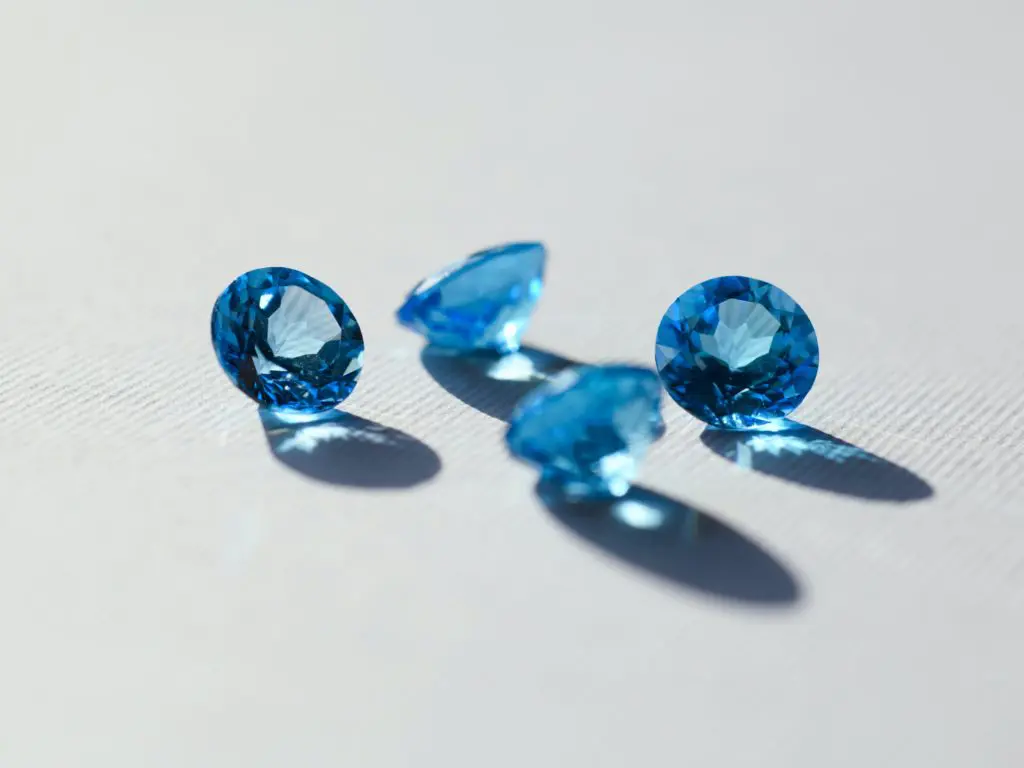Known for their dazzling colour, blue sapphire stones are some of the most beautiful and desirable gems in the world. As part of our ongoing “Adaptability, Versatility, Longevity” live project, renowned London-based jewellery brand Alex Monroe has generously donated a selection of recycled sapphires to BAJ. The live project will see our students use these stones to create fantastic transformable sapphire jewellery pieces. Here we explore some of the qualities and uses of these fascinating gems.

Sapphire is a variety of corundum, the same mineral as ruby, which is the name we give to red corundum stones. While blue sapphire stones are the best-known, sapphires are also available in shades ranging from green and yellow to pink. Displaying a unique blend of pink and orange hues, padparadscha sapphires are among the rarest and most spectacular gemstones. Corundum consists of aluminium oxide and typically contains traces of elements such as iron, titanium, vanadium and chromium. It is a remarkably hard mineral, measuring 9 on the Mohs hardness scale, which places it just below diamond.
The Kashmir region, in India and Pakistan, is generally considered to be the source of the finest and most highly prized sapphires. Historically, Myanmar and Sri Lanka have also been famous sapphire producing countries. More recently, sapphires from Madagascar, eastern Africa, Thailand and Australia have begun to occupy a larger share of the market. Sapphire mining operations range from smaller open and shallow pit mines to large commercial ventures, such as those found in Australia and Thailand.
Sapphires have been appreciated for their beauty for centuries, and sapphire jewellery has been popular throughout history. In the late Medieval period, the clergy wore ecclesiastical rings with sapphires, because their colour mirrored that of the heavens. The British royal family has also long been partial to sapphires, with many notable examples featuring among the crown jewels. This tradition continues to this day, with Prince William having proposed to Kate Middleton with a ring featuring a blue sapphire stone that once belonged to Princess Diana in 2010.
At the time, this royal exposure sparked a global trend for sapphire engagement rings. Today, we use sapphires of various colours in all kinds of jewellery, including bracelets, necklaces, rings, brooches and earrings. With their incredible hardness and dazzling colour variations, they are versatile stones that can be worn every day. Thanks to their incredible hardness, sapphires are also important in other industries, which use them to make lenses, watches, windows and medical equipment, for example.
Jewellers and jewellery lovers alike are increasingly concerned with the ethical implications of their pieces. Although less controversial than their diamond producing counterparts, some sapphire mines have attracted criticism for their humanitarian and environmental impacts. Lab-grown sapphires have been available for some time and offer a guaranteed ethical alternative to natural stones. But what about when only a natural stone will do for your sapphire jewellery piece?
There’s more information about gemstone provenance and supply chains available than ever before, but it can still be difficult to ensure a stone’s ethical credentials. Recycled sapphires are therefore an interesting option for jewellers looking to create dazzling pieces without compromising on ethics. And with consumers eager to make ethical purchases, demand for jewellery featuring recycled stones has risen noticeably in recent years. In this way, using recycled stones, such as sapphires, can be a real differential for brands.
For more information on “Adaptability, Versatility, Longevity” and BAJ’s other live projects, click here.
Telephone: +44 (0)20 7405 0197
Company Registration Number:
05992037

Be the first to hear about competitions and giveaways, events, special offers and exclusive discounts, new course dates, and other updates from BAJ and its sister company Free2Learn.